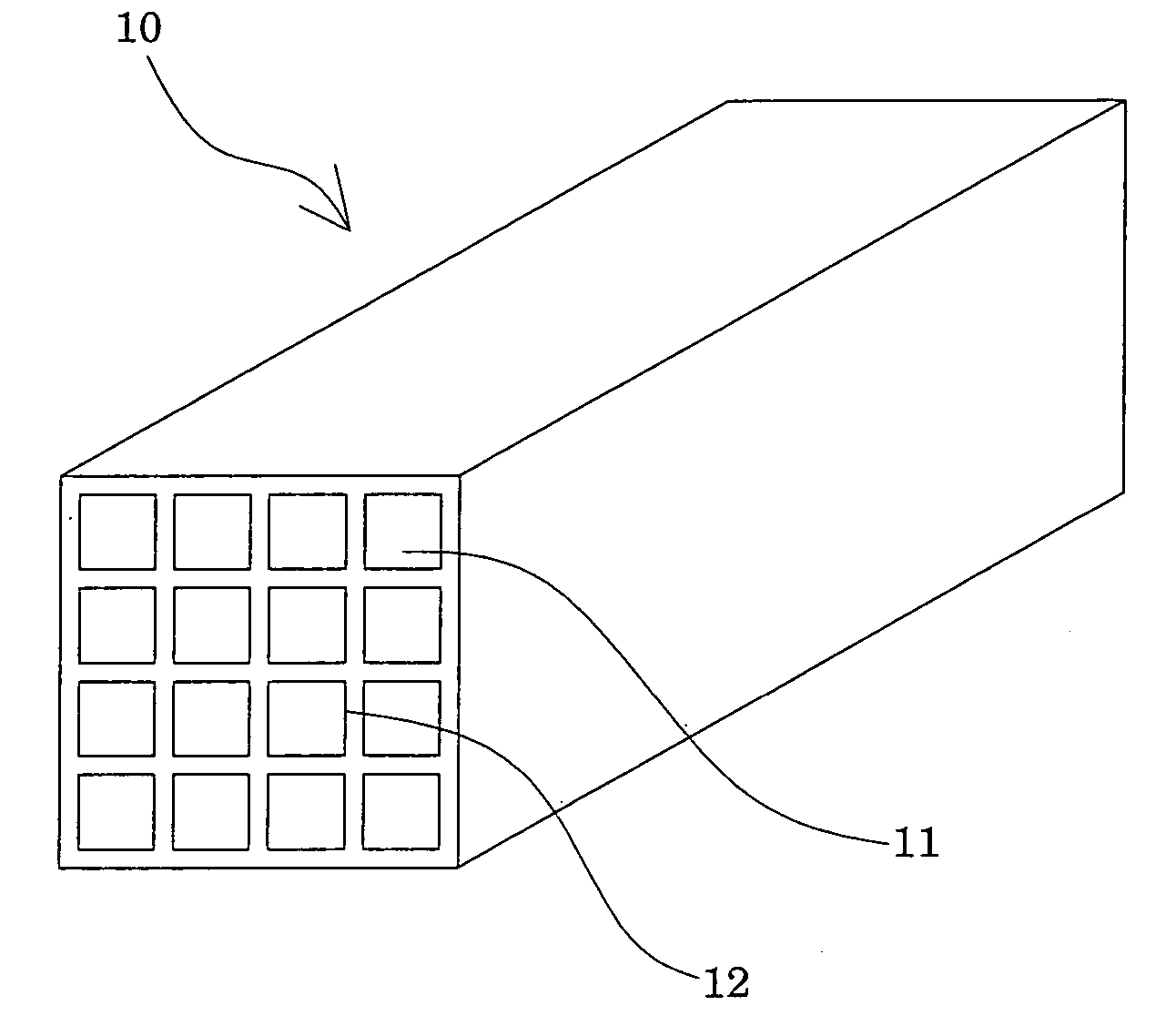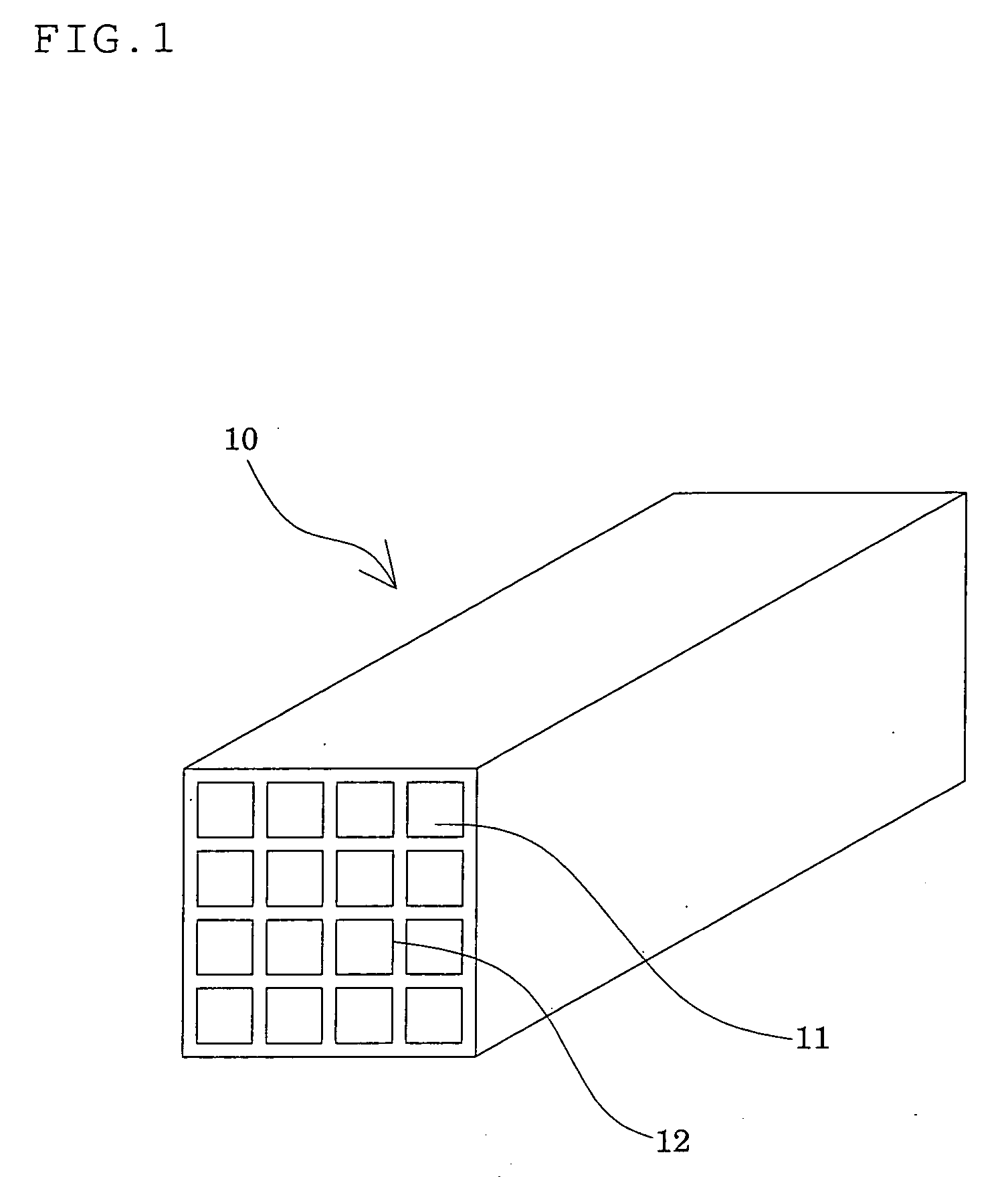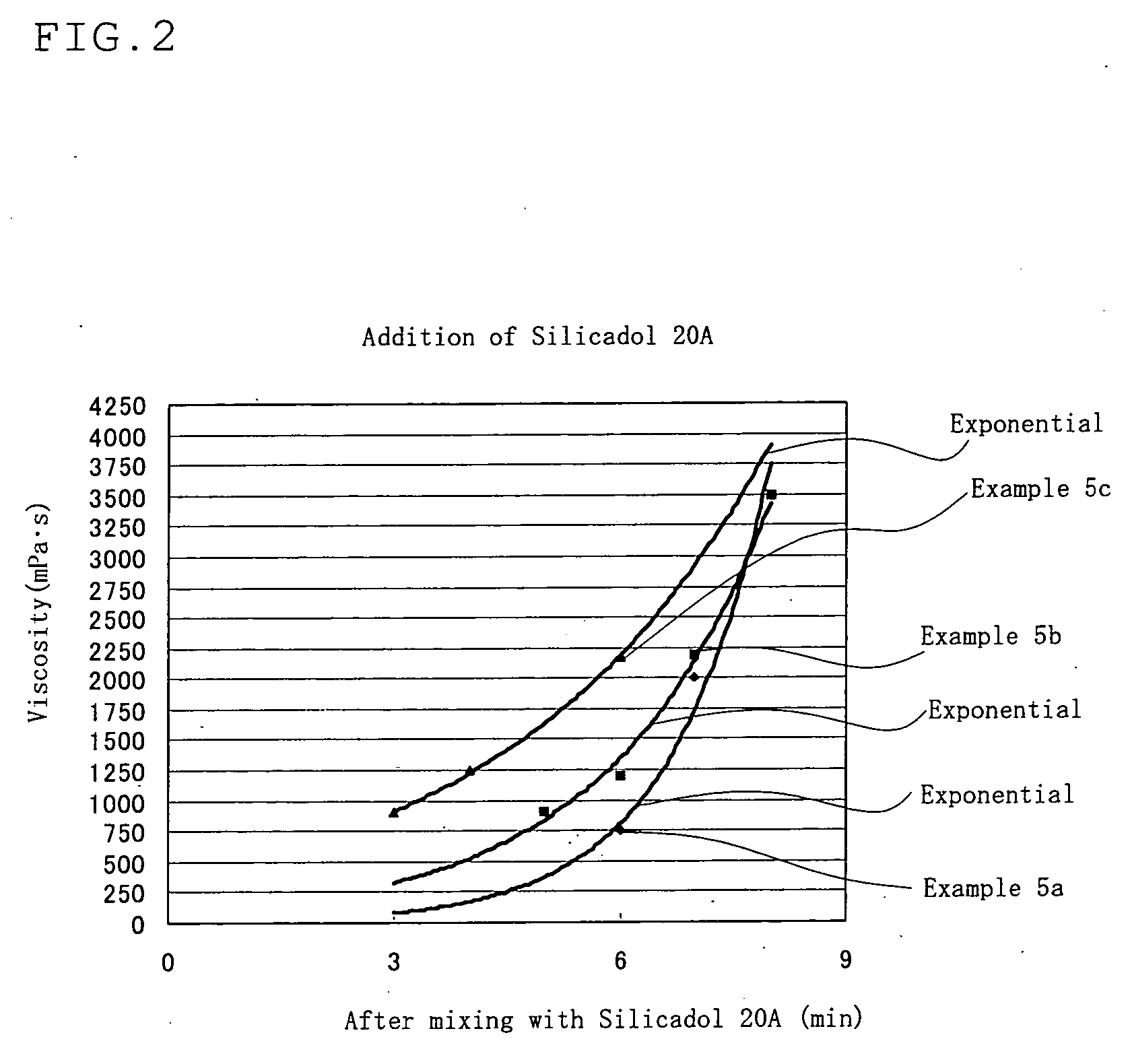Deodorant material and process for producing the same
- Summary
- Abstract
- Description
- Claims
- Application Information
AI Technical Summary
Benefits of technology
Problems solved by technology
Method used
Image
Examples
example 1
[0088] Sepiolite (particle size: 0.5 to 1.0 mm, naturally occurring in Turkey) was subjected to preliminary firing at 600° C. for one hour. The thus-fired sepiolite, expanded perlite (for example, trade name: Topco Perlite), finely divided sepiolite powder (trade name: Milcon SP-2, product of Showa Mining Co., Ltd., the 10 as shown in FIG. 1. The deodorizing article 10 had outer dimensions of 10 cm×10 cm×20 cm, and 16 penetrated flow lines 11. Each penetrated flow line 11 was tapered, in consideration of releasing from the mold, and had one opening (18.7×18.7 mm) having a thickness of a partition wall 12 of 4.8 mm and the other opening (17.8×17.8 mm) having a partition wall thickness of 5.6 mm.
example 2
[0089] The procedure of Example 1 was repeated, except that alumina cement was employed as a white inorganic filler instead of colloidal silica in an amount shown in Table 1, to thereby produce a deodorizing article.
example 3
[0090] The procedure of Example 1 was repeated, except that portland cement was employed as a white inorganic filler instead of colloidal silica, in an amount shown in Table 1, to thereby produce a deodorizing article.
PUM
| Property | Measurement | Unit |
|---|---|---|
| Bending strength | aaaaa | aaaaa |
| Fraction | aaaaa | aaaaa |
| Fraction | aaaaa | aaaaa |
Abstract
Description
Claims
Application Information
 Login to View More
Login to View More - R&D
- Intellectual Property
- Life Sciences
- Materials
- Tech Scout
- Unparalleled Data Quality
- Higher Quality Content
- 60% Fewer Hallucinations
Browse by: Latest US Patents, China's latest patents, Technical Efficacy Thesaurus, Application Domain, Technology Topic, Popular Technical Reports.
© 2025 PatSnap. All rights reserved.Legal|Privacy policy|Modern Slavery Act Transparency Statement|Sitemap|About US| Contact US: help@patsnap.com



